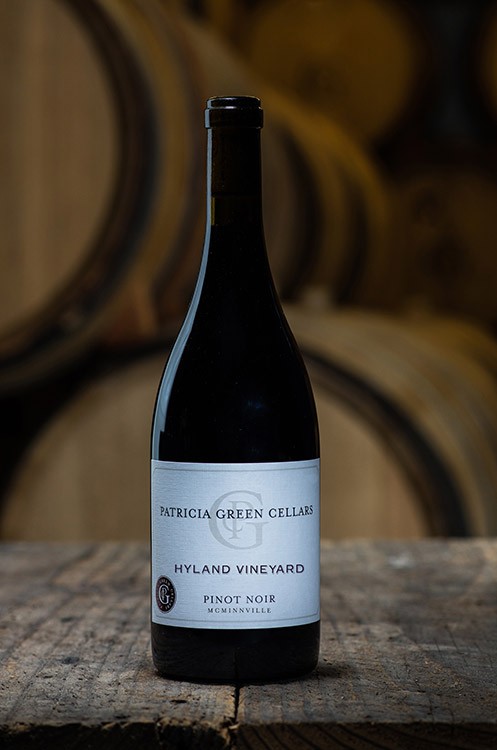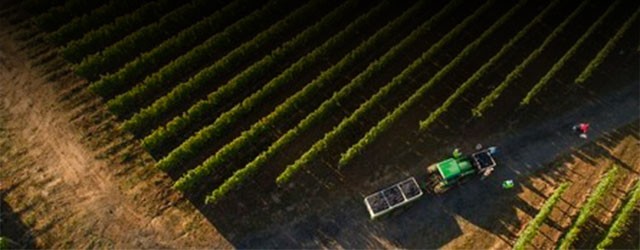2023 Hyland Vineyard Coury Clone Pinot Noir 3L

Site History: Hyland Vineyard is planted on land that dates to the late 1840s when the land was initially part of the original Oregon Trail homestead claimed by Benjamin Hyland. A hundred and thirty years later, this land became the home of Hyland Vineyard when four families (the Kreimeyers, Markleys, Welches and Trenhailes) teamed up in 1971 to plant Pinot Noir on the now 200-acre estate that has 180 acres under vine, making it one of Oregon’s oldest and largest vineyards. Even by the standards of today, with paved roads, fuel-efficient vehicles, and GPS, Hyland Vineyard still remains remote even being within Yamhill County. When the vineyard was initially planted it is hard to imagine exactly how far removed from the rest of the Oregon wine and vineyard “industry” it actually was. In 2007 Laurent Montalieu and Danielle Andrus purchased the site and expanded it to its current size. The vineyard is now owned by the NW Wine Company.
Site Characteristics: Hyland Vineyard is an isolated vineyard well out on the southern fringe of the McMinnville AVA. It’s an amazing old vineyard and the idea that someone either was crazy enough or had the temerity to plant a vineyard this far out in the middle of nowhere in 1973 is spellbinding. Many great vineyards in the world don’t look like they’re great vineyards. Some of the most notable vineyards look entirely ordinary. Hyland is not one of those. It is a towering amphitheater that opens to the east and the whole bowl is lined with vines that date back as far as the original plantings. Raptors soar through the trees that line the site and there are constant screeches from them as they hone in on their prey. The air is noticeably cooler up here on hot days, there is a consistent breeze but the sun feels more radiant here than in other sites. It is a unique and special place. The vineyard is farmed, at the very least, organically and every effort is taken to ensure the volcanic soil has incredible looseness and vibrancy to it. There is no question that this is one of Oregon’s standout if lesser known vineyards.
The Blocks: We have only been with this vineyard since 2017 when we agreed to take 5 tons of fruit from a large block that Kelley Fox had committed to but could not take all the fruit from. In 2018 and 2019 we received fruit from the same block of Coury Clone. Things changed, slightly but for the better, in 2021.
•Block 7A Coury Clone: This is our base block. It is a lightly sloped block with extremely long rows (over 100 vines) planted in an old-school 7 x 7 pattern with unusually high trunks. This block was planted in 1989 in the “second section” of Hyland at the base of the extremely steep and impressive amphitheater hillside that defines this vineyard’s topography.
•Block 2B Coury Clone: Planted in 1972, this is the mother block of all Coury Clone in the state of Oregon. Still trellised as it was when originally planted these vines look like gothic statues when barren
and like odd vine “trees” with fruit at the top when fully laden. We had asked after a portion of this block for a couple of years and were finally granted 2 acres in 2021.
Farming Practices: 100% Organically farmed. All Patricia Green Cellars’s sites are dry farmed.
Picking Dates, Tonnages, Tons/Acre: September 27 Block 2B, 4.69 tons (2.34 tons/acre), September 30 Block 7A, 9.93 tons (3.09 tons/acre).
Vinification: All fermenters from Block 2B were 100% destemmed into 1.75 ton, open-top fermenters. Of the six total fermenters from Block 7A, four fermenters were 100% destemmed with the other two were fermented with 50% whole clusters.
Winemaking: Fermentations were managed by a combination of pump overs early in the process and exclusively prior to fermentation beginning as well as pigeages to ensure gentle handling, extraction and delicate tannin construction. Cold soaks 4-5 days in length. Full fermentation from beginning to pressing was 17-19 days depending on the fermenter. 48-72 hour settling prior to being racked to barrel. All wines on full lees until assemblage for bottling. Bottled without fining or filtration.
Barrels: This 28 barrel bottling represents far and away our largest bottling of the Hyland Vineyard, Coury Clone Pinot Noir since we began sourcing it in 2017. This is around double the size of the bottlings we have done in the past. This is another example of our belief that the 2023 vintage is so excellent that we will have demand for certain wine far in excess of what we generally expect. This bottling used 9 new barrels that includes a unique combination of barrels from the following cooperages: Cadus, Damy, D&J and Tonnellerie O. All 8 barrels of Block 2B that were from the 50% whole cluster fermenters were included. They joined another 10 barrels from the destemmed portion of the block. Block 2B contributed 10 barrels to the final blend, as well as more than half of the new barrels.
Notes: This is quite probably the first vineyard planted in what is now the McMinnville AVA. This AVA is known for producing darkly pigmented, tightly wound, densely fruited and heartily structured Pinots. Sometimes to a fault. This wine takes the unique combination of elements; higher elevation, Coury Clone, volcanic soil, organic farming, old vines, gentle handling and molds them into a special wine with great fruit, noticeable tea like spices (completely a mark of the Coury Clone) and firm, backpalate tannins and incredibly texture.
This is the second bottling (2021 being the first) that included the 1972 section (Block 2B) into the bottling that originally started with solely the 1989 section (Block 7a). Initially, in barrel, it seemed that the 2 blocks were relatively similar in nature. As time went by, malolactic fermentation and completed and the wines began to shake out it became clear that this original viewpoint was incorrect. The 1989 was exactly what we were both expecting and accustom to; dark both in color and flavor profile this wine was meaty, brooding and thick with tannin on the back palate. The 1972, however, had turned brightly red-fruited and had great acidic intensity as well as a polished texture that gave way to much finer-grained tannins on the finish than the 1989. By combining the best of the barrels from each block we believe we have crafted a version of this bottling that is still true to the site and the clone while bringing even more to the table than its previous three incarnations while leaving nothing behind. This is a densely fruited yet sinuous and strong Pinot Noir. This will reward long, long term aging. The wine finished with numbers of a TA of 5.4, a pH of 3.57, a free sulfur level below 35 ppm and a total sulfur below 80 ppm.
Tasting Note: Please be aware that I loathe to write tasting notes on our wines. Each person has an individual palate and therefore unique experiences with every wine. Also, what a person has tasted in their life and what they enjoy informs them on what a wine is like. If I tell you a wine tastes like cherries and you either have never had a cherry or don’t like cherries what I am saying is irrelevant information. That being said I have been asked to include my thoughts on each wine (since we have so many).
As good as I feel our wines have been over the years and as much as I think we have shown and seen improvements in every aspect of the winemaking, there is a unique character to the quality, intensity and complexity of the 2023 vintage that I believe puts virtually every wine we produced in 2023 over every other bottling of the same wine from any other vintage. The 2023 Hyland Vineyard, Coury Clone bottling is as suave and polished a bottling of wine as we have ever released. This is Pinot Noir silk draped over a crushed-velvet chaise lounge. There are few things like this in the wide world of Pinot Noir. The red fruit is in piercing relief against the structure that is gently firm underneath the incredibly fine and nuanced texture the wine possesses. This is a wine of both substance and grace. This will be a wonder to drink in its youth and remarkable even 20+ years later.

